Crew a boat
Britain’s extensive network inland waterways – rivers, streams and canals – covers a whopping 4,700 miles, of which 2,700 are navigable. The organisation that looks after this network, the Canal & Rivers Trust, has a number of opportunities for volunteers to maintain its historic boats and also pilot some of them around a selection of national shows to help educate visitors about the traditional way of life of narrowboat families.
To learn the ropes at sea, have a look at Maybe Sailing, which takes on volunteers to help crew as it teaches guests to sail its tall ships (this year sees trips in the Scottish islands and off the south coast, including the Scillies). Crewseekers also lists crewing opportunities and is worth monitoring for last-minute places on vessels small and large.
Do a proper expedition
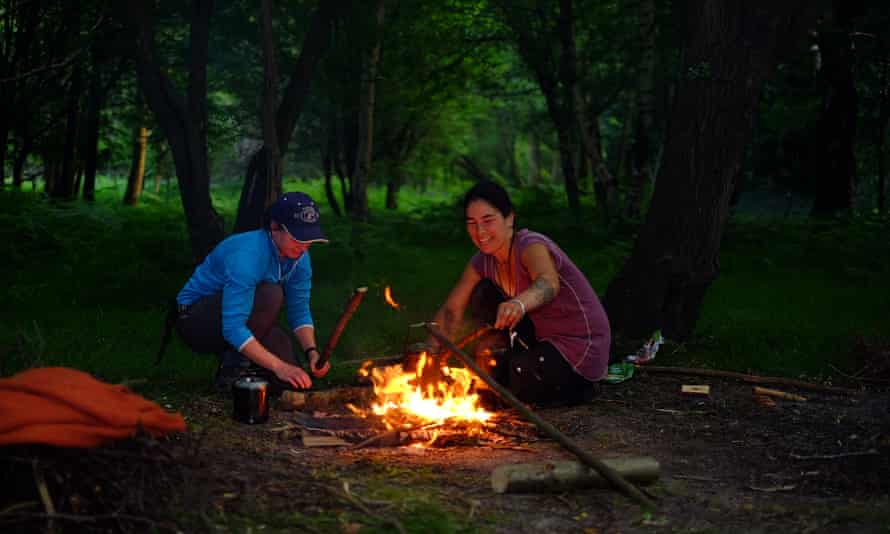
Any trip that’s challenging and pushes you out of your comfort zone for several days can be called an expedition. Before heading out on your own though, it’s best to learn the basics. Mountain Leaders can be found across the country to help you realise your expedition goals – and some leaders who are still in training will even take you for free to build up their experience.
Polaris Outdoor in Cornwall has two five-day options, including a paddleboarding Survival Adventure (from £550pp) which includes shelter building, coasteering, foraging, fossil hunting and fire building. Its five-day Sea Kayak Expedition (from 27 September, £575) features survival tuition and camping in secluded wild spots.
In Cumbria, Wild Human has a six-day Woodlander course teaching survival skills, tracking, foraging, carving and wild camping (15-21 Aug, from £549); and Ray Mears’s Woodlore company runs a week-long Fundamentals course in East Sussex teaching all of the above as well as shelter making, wilderness fishing, backcountry hygiene and natural navigation (4-10 July and 15-21 Aug, £650pp).
Go island hopping in Scotland
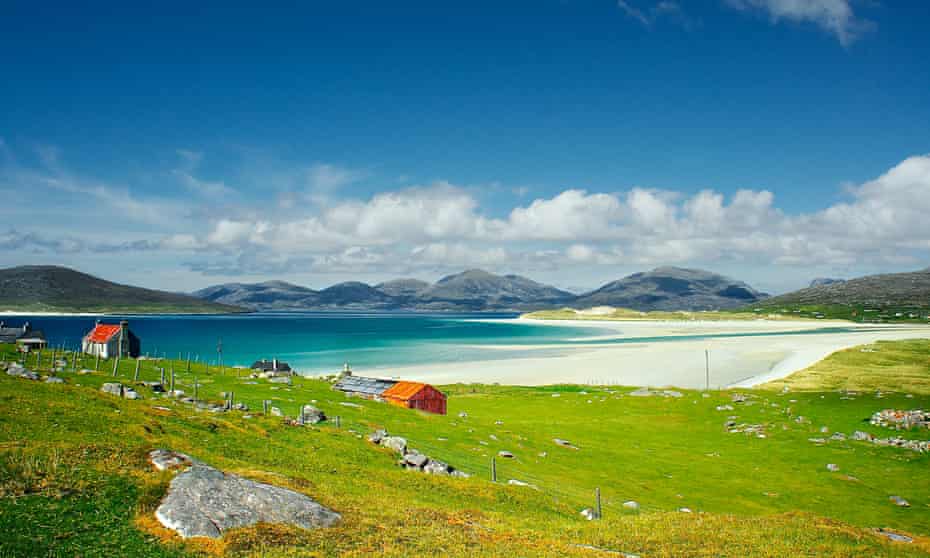
Swap the Greek yassas for a friendly “hello” on an exploration of the Hebrides. While island hopping is most commonly associated with the Aegean, CalMac Ferries’ west coast network allows for a Scottish equivalent. Its Hopscotch tickets are valid for 31 days and allow you to plot your own route between remote peninsulas and islands by car, campervan, bicycle or on foot.
Route 7 starts in Oban and takes in the colourful waterfront houses in Mull and the wildlife hotspot of the Ardnamurchan peninsula before heading on to Mallaig and then over the water to Skye. For surf and solitude, Route 19 combines the westernmost isles of the Inner Hebrides, including Coll and Tiree, which are perfect for stargazing by night and birdwatching during the day.
For the ultimate voyage, Route 25 sails to the Outer Hebridean isle of Barra, from where you can explore this entire far-flung chain of islands and their Caribbean-esque white sand beaches, including the Uists, Harris (minke whales and basking sharks can be spotted from the boat) and Lewis (for neolithic sites), plus a stop to explore the fairy pools and Cuillin mountains on Skye.
Save money by wild camping, which is legal in much of Scotland.
Passes start from £42.20, or £202.95 with a car, calmac.co.uk
Get your kicks on the Kintyre 66
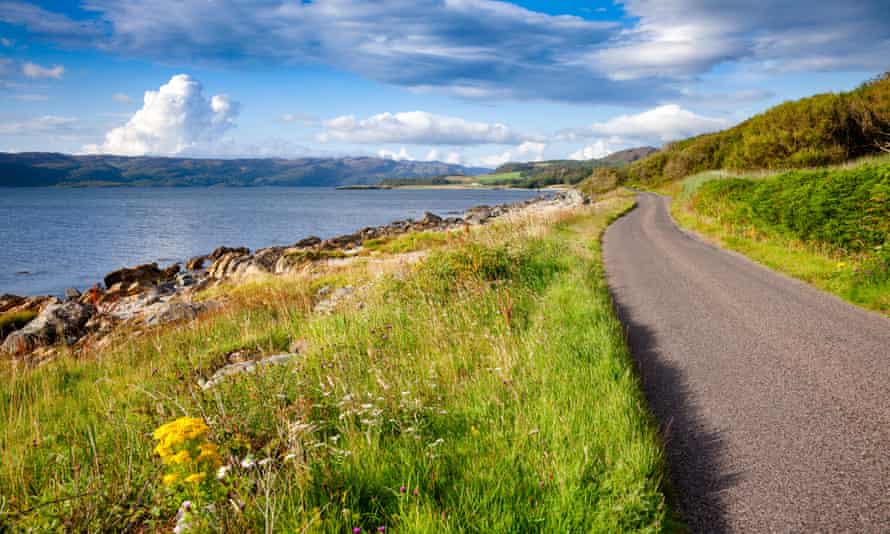
Borrowing its moniker unashamedly from the US’s famous road trip, Scotland’s newest driving tour is the K66. Following a – you guessed it – 66-mile loop around the Kintyre peninsula on the west coast, it utilises the A83 and B842 roads to bring visitors to often-overlooked Argyll. Aiming to inspire slow travel rather than a speedy hour’s drive (cycling the route would slow things down nicely), it recommends that visitors allow at least a week to visit highlights such as the Ballochroy Standing Stones, Saddell Castle, Keil Caves, homely harbour towns, surf beaches and the Beinn An Tuirc distillery.
In addition to the main route there are six “spurs” to encourage further exploration of places such as the village of Tarbert (for amazing seafood), Claonaig, Carradale (for views of the Kilbrannan Sound and an iron age hillfort), Southend, Machrihanish (for its nature reserve and surfing beach) and, via ferry, the seven-mile-long Isle of Gigha, reputedly one of Scotland’s sunniest spots.
Book hotels, B&Bs or campsites in advance at wildaboutargyll.co.uk. Over on the west side of the peninsula, Tarbert Holiday Park has glamping pods from £50 a night for two. In the east, Peninver Sands is a caravan park with a few tent pitches (£13-£17 a night)
wildaboutargyll.co.uk
Volunteer on a kids’ summer camp in Cornwall

Not just the preserve of the US, summer camps are big in Britain too, offering young people the opportunity to learn new skills, make friends and become ambassadors for sustainable living. Camp Kernow is one such initiative and every August it seeks volunteers for its environmental and adventure camp.
Living off-grid in tents, volunteers undertake a one-week training course before becoming an integral part of camp life. If you want to help out but are less keen on working with children, there are also volunteer maintenance positions behind the scenes, helping to keep the place running.
Residential volunteer opportunities in general have been reduced this year because of Covid – but those planning ahead could look at organisations such as the RSPB, which runs projects across the UK for those interested in birdlife.
Accommodation, food, travel expenses and wifi are covered, campkernow.org.uk
Walk Britain’s oldest pilgrim path
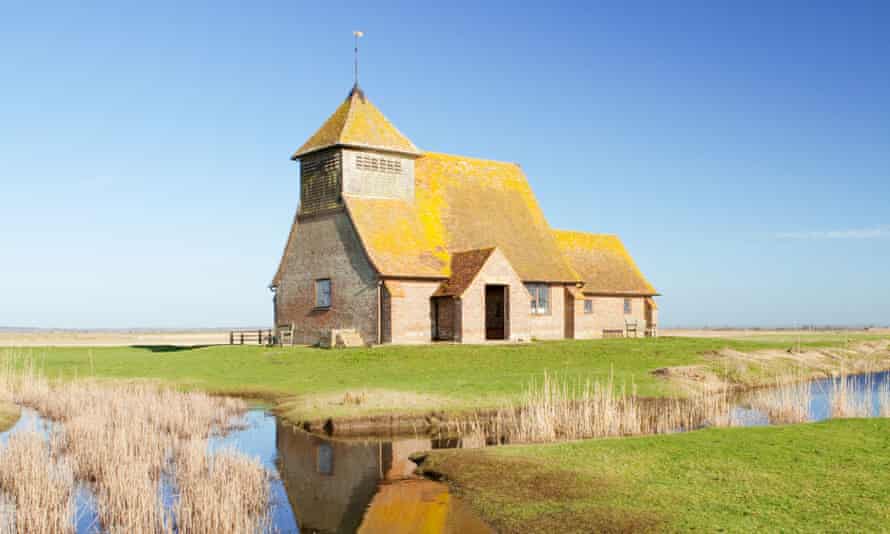
“Bring your own beliefs” is the motto of the British Pilgrimage Trust (BPT), the charity responsible for resurrecting the Old Way, one of the country’s most ancient pilgrimage routes. Taking inspiration from Spain’s Camino de Santiago (which saw a record 360,000 peregrinos walk the route in 2019), the BPT felt it was time to bring back the spiritual walks that Henry VIII made illegal in 1538. Based on Britain’s oldest road map, the 1360 Bodleian Map, the 250-mile, three-week hike runs from Southampton to Canterbury, taking in the Solent coast, the South Downs, the Pevensey Levels and Romney Marsh.
Unlike the Camino, the Old Way is still a work in progress in terms of waymarking, pilgrim passports and compostela documents for finishers, but that means fewer people and the satisfaction of knowing that you are one of just a handful of trailblazers re-establishing this ancient trail.
The BPT is working with churches, village halls and campsites to establish “sanctuary stops”, which will be low-cost or free to stay in for pilgrims. Maps, downloadable GPX files and current accommodation options are available from its website, and feedback is encouraged. Although the original aim of the pilgrimage was to pay respect at Thomas Becket’s shrine in Canterbury, today the emphasis is on heavenly scenery rather than religious fervour.
britishpilgrimage.org/old-way
Campervan road trip

New Zealand is the home of the quintessential campervan trip, but the UK’s varied and compact landscape means this is also a great place for a van adventure – and it needn’t cost a fortune. Camplify is the Airbnb of campervan, caravan and motorhome hire, with pickup locations across the UK, from £100-£150 day for a four-berth in summer (much cheaper out of season). This could be a good option for a team of friends – particularly if you take a tent, too.
The options for thrilling campervan road trips are many. Famous ones include Northern Ireland’s Causeway Coastal Route, taking in Belfast, the Glens of Antrim, the Giants Causeway and Derry; in England there’s the Atlantic Highway from Bath to Land’s End, a 240-mile exploration of the dramatic West Country coast; and the Norfolk and Suffolk coast, taking in Victorian seaside towns, beautiful beaches, wildlife reserves with resident seal populations, and a host of water-based activities.
Following the runaway success of the (now overrun) North Coast 500 Route in Scotland, a quieter alternative is the South West Coast 300, whose highlights include Culzean Castle, Galloway Forest Park, Southerness lighthouse and the windswept Mull of Galloway.
camplify.co.uk
An overland adventure in Scotland

An overland trip to Africa or Asia on a converted bus with a group of strangers used to be a traveller’s right of passage. And this experience inspired a travel-mad Scot called Angus to launch his “adventure hostel on wheels”, a journey around his native land, beginning in Edinburgh, in a converted American school bus.
The seven-berth bus has lots of space, electricity, a dining and lounge area and kitchen. For less-favourable weather (this is Scotland after all) there’s an awning that allows for outdoor cooking (all meals are included), and every night the bus stops at a campsite for hot showers and proper toilets (though there is an emergency loo on board). Along the way activities include mountain biking and hiking in the Cairngorms, kayaking in Loch Morlich and a hike on the Devil’s Staircase in Glencoe.
Five-day trip £495pp all-inclusive (accommodation, food and activities), next available trip 6 September but bespoke trips are possible, thebonniecamper.com
‘Interrail’ around Britain

Train travel is usually expensive in the UK, but there are discounts and passes available if you know where to look. To explore the entire country, the Rail Rover’s All Line Rover is the way to go, as it covers many train companies in England, Wales and Scotland.
The pass does work out more pricey than Interrailing, but it includes three classic rail experiences. First and foremost is the Caledonian Sleeper between London and Scotland, including Fort William and Inverness in the Highlands, and a smattering of stops in between (book ahead as far as possible). The Night Riviera Sleeper with Great Western Railway from London Paddington weaves along the south-west coast before arriving at Penzance in Cornwall at dawn. And the Ffestiniog and Welsh Highland Railways wind their way through the 40 miles of Snowdonia national park powered by steam.
Bag a 14-day pass and you could easily fit in all three journeys as well as the Lake District coast, a meander to Pembrokeshire and a whistle-stop tour of Scotland’s biggest cities.
From £356 for a seven-day pass or £540 for the 14-day one (both with a 16-25 Railcard); a Two Together discount also applies – so works well if you’re travelling with a friend, tickets.gwr.com
Plot a British hut-to-hut hill walk
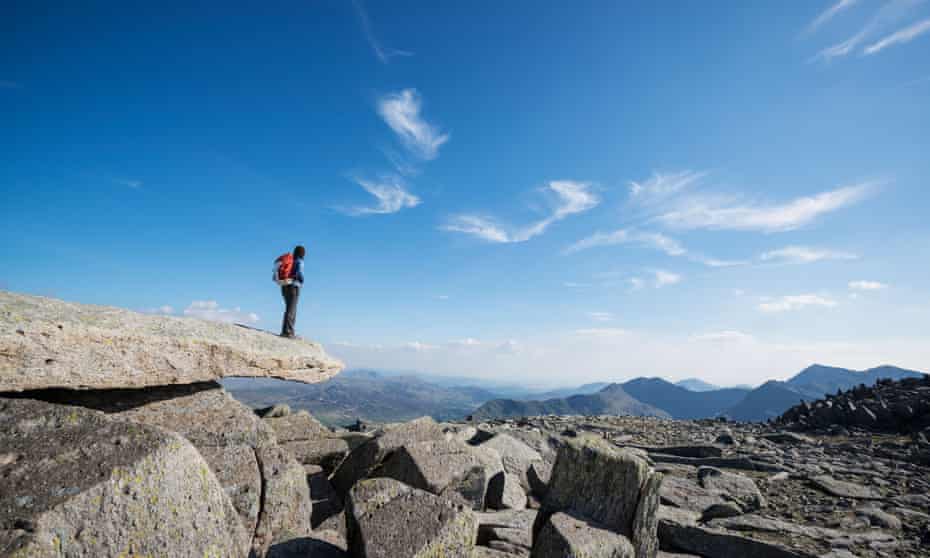
From Patagonia to the Pyrenees, mountains around the world offer hut-to-hut hiking routes, where you can explore an area safe in the knowledge there’s a bed and hot meal waiting at the end of each day. While the UK doesn’t have the same set-up, the YHA and Hostelling Scotland networks have dozens of rural hostels across the country that can be linked to form an affordable multi-day hiking trip. Many hostels now have comfortable rooms and on-site restaurants, so you can put your feet up with a glass of something at the end of the day. Lockdown restrictions are slowly being relaxed, with private rooms, camping, some smaller dorms and communal areas opening first – check ahead.
In Snowdonia, the Llanberis, Snowdon Ranger, Bryn Gwynant and Pen y Pass hostels can be linked to make a wonderful rambling circuit, with plenty of route options, high and low, connecting them. In the Peak District, a tour taking in Castleton, Hathersage, Eyam and Ravenstor offers caves, valleys and hills as well as tearooms and good pubs. The Lake District can also be explored using remote options including Honister Hause, Buttermere and the enchanting Black Sail Hut (which can only be accessed on foot).
yha.org.uk, hostellingscotland.org.uk
Learn to dive in Devon
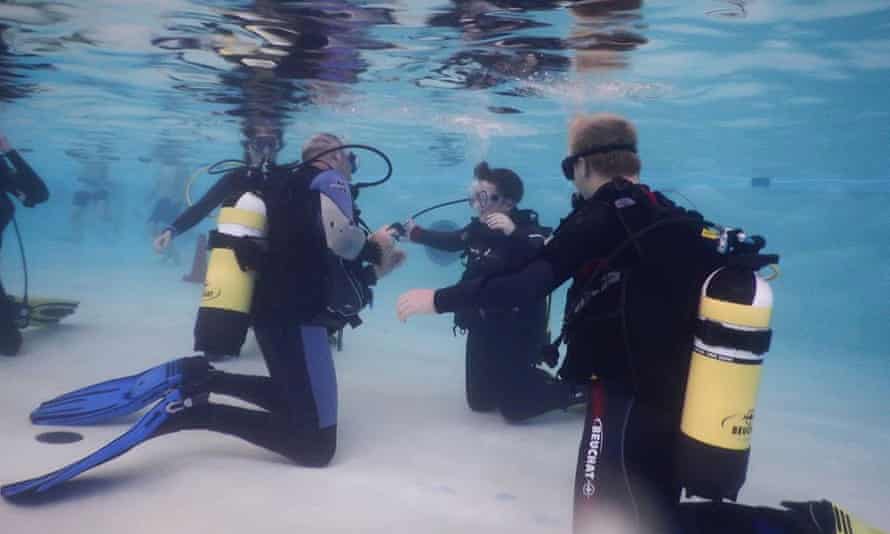
Most people picture gaining their Padi open water diving qualification somewhere tropical such as Thailand or Queensland, but many accredited companies across Britain also offer it, some with incredible dive sites and marine life encounters nearby. All begin with theory courses with other learners in a pool – to get participants used to equipment, hand signs and emergency procedures – before heading to a quarry, lake or sheltered bay to undertake the four obligatory open water dives.
North Devon is a perfect place to learn, as once you’ve completed the certification process in Ilfracombe you can go for a wildlife encounter on the island of Lundy – diving with grey seals. Found around Gannet’s Bay, these creatures are renowned for their inquisitiveness and will play with human visitors like a puppy would – tugging at fins, spinning alongside and regarding them with their big, curious eyes.
From about £265 for Padi Open Water courses, dives with seals from £177 including equipment, boat to the dive site and two dives, easydiversnorthdevon.co.uk
Trek Britain’s Great Wall
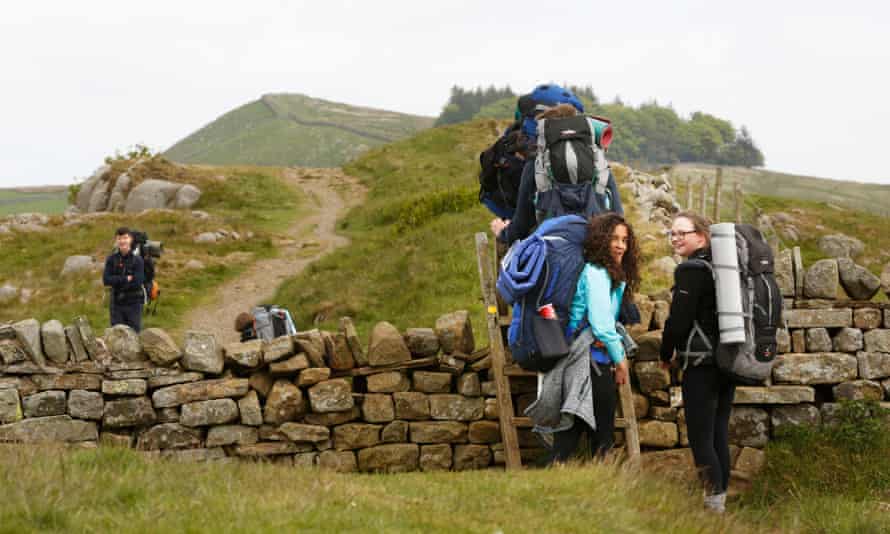
It may not compare to China’s Great Wall for length or drama, but the ancient border between England and Scotland, built by the Romans to stop the Celts from invading, is a match for anywhere in the world when it comes to history.
And at just 84 miles, hiking the full length of Hadrian’s Wall is a more appealing and attainable prospect. Running from Wallsend in Newcastle upon Tyne in the east to Bowness-on-Solway in the west, it offers a coast-to-coast trek with a real sense of achievement. Navigation is straightforward as the entire route is clearly waymarked, and campsites, hostels and B&Bs are plentiful. Along the way the scenery changes from urban to moorland and rolling fields, dotted with many Roman ruins. Complete it between May and October and there is a passport scheme in place, with various businesses offering stamps, so hikers claim a certificate and official badge.
nationaltrail.co.uk
Lace up your boots for a mountain challenge
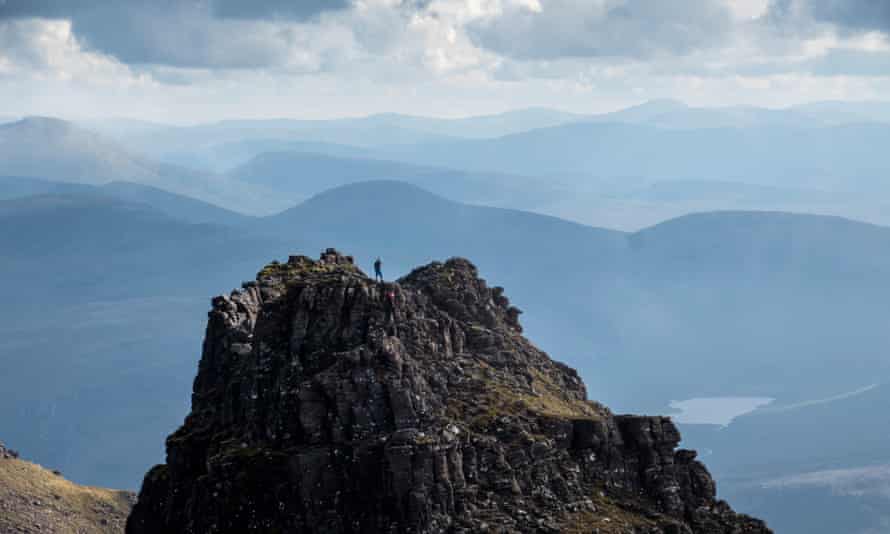
There’s no need to visit the Alps for a mountain challenge. Britain has plenty of options for peak baggers, most famously Scotland’s 227 Munros, the 214 Lake District Wainwrights and 15 Welsh 3000s.
The first is a peak-bagging list of all Scottish mountains above 3,000 feet created by Hugo Munro.Wainwrights are also named after their “creator” – the guidebook writer and illustrator Alfred Wainwright – 214 hills selected by him simply because he loved them (all but one are over 1,000 feet).
Then there are the Welsh 3000s, the 15 tallest peaks in Snowdonia that can be walked in one (very long) go – between 24 and 30 miles depending where you start. Serious peak baggers attempt to scale all of 15 them within 24 hours, but there is really no rush – taking your time means each peak can be savoured (and remembered). Spreading them over three to five days makes for an achievable – and more enjoyable –experience.
Before getting high it’s worth considering an introductory training course at an outdoor centre such as Plas y Brenin in north Wales, Glenmore Lodge in the Cairngorms or Keswick Mountain Adventures in the Lakes.
If you need help planning your Wainwright-bagging escapade, the great man’s original guidebooks are still available from wainwrightguides.co.uk and bookshops. A great beginner’s guide to tackling the Munros can be found at here. And for the Welsh 3000ers check out welsh3000s.co.uk.Life-defining walking trails

Travel writer Bill Bryson famously exposed the realities of taking on a long-distance trail in his 1998 book A Walk in the Woods, about hiking the Appalachian Trail on the US’s eastern seaboard; and Cheryl Strayed recounted the transformative effect of walking the Pacific Crest Trail in her 2012 book Wild. Though not nearly as long, many UK trails are equally life-defining with stunning terrain – not least the 15 National Trails across England and Wales.
The oldest, most famous and one of the wildest-feeling is the Pennine Way, which follows the “spine of Britain” for 268 miles along hills and moorland from the Peak District up to the Scottish Borders. Along the Welsh border, the 177-mile Offa’s Dyke Path follows an eighth-century route constructed on the orders of King Offa of Mercia to divide his kingdom from Wales. For an epic coastal tramp, the South West Coast Path not only covers 630 miles, but also involves scaling the equivalent of four Everests.
The National Trails website is a goldmine of information with advice on each route, including accommodation options and how to break the trails into sections. There are hundreds of lesser-known options across the entire country on the Long Distance Walker’s Association’s website, which has a huge database.
See Scotland’s Big Five

When it comes to wildlife, Scotland is one of the best places in the world for spotting birds, mammals and porpoises, all without the crowds or expense of a classic African safari. The “big” five are golden eagle, red deer, otter, harbour seal and, er, red squirrel.
For the best chance of seeing all of them on a single trip, start in Fort William and drive to Loch Shiel. Here the golden eagle can often be found hunting alongside hen harriers, black-throated divers and sea eagles. Sunart, the next loch over, is home to the Garbh Eilean wildlife hide, from where you can watch harbour seals basking and, with a bit of luck, spot an otter along the shoreline. Leave the water for Kingairloch, where red deer and feral goats are frequently seen. Return to Fort William via the Corran Ferry, which holds the promise of spotting porpoises, then, back on the mainland, Inchree forest is home to the final species on your Big Five checklist, the elusive red squirrel, with feeders set up to entice them.
This wild tour can be done in one day or over several. Cars can be hired in Fort William and wild camping and campervan pit stops abound. To increase your spotting chances, consider a guided tour company such as Wild West, which offers private trips for groups of up to six – or follow them in your own vehicle and tune into the radio for a commentary.





